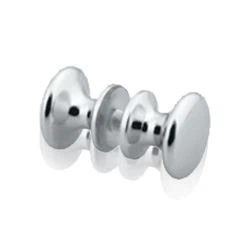As an auto parts supplier, I understand the crucial role that proper storage plays in maintaining the quality and integrity of our products. Auto parts come in various shapes, sizes, and materials, each with its own unique storage requirements. In this blog post, I will share some of the best ways to store auto parts, ensuring they remain in optimal condition until they reach the hands of our customers.
1. Categorization and Organization
The first step in effective auto parts storage is categorization and organization. This involves grouping similar parts together based on their type, function, or vehicle compatibility. For example, you can have separate sections for engine parts, transmission parts, suspension parts, and electrical components. Within each section, further categorize the parts by size, brand, or model.


Using a labeling system is essential for easy identification and retrieval of parts. You can use labels, tags, or barcode scanners to mark each storage location and the parts themselves. This not only saves time but also reduces the risk of misplacing or losing parts.
2. Storage Containers and Shelving
Choosing the right storage containers and shelving is crucial for protecting auto parts from damage. Depending on the size and shape of the parts, you can use plastic bins, metal cabinets, or wooden crates. Make sure the containers are sturdy, durable, and have tight-fitting lids to prevent dust, moisture, and pests from entering.
For smaller parts, such as nuts, bolts, and washers, you can use small plastic containers with compartments. These containers are easy to stack and organize, making it convenient to find the parts you need.
When it comes to shelving, opt for adjustable shelves that can be customized to accommodate different sizes of parts. This allows you to make the most of your storage space and ensure that the parts are stored in a stable and secure manner.
3. Environmental Control
Auto parts are sensitive to environmental factors such as temperature, humidity, and light. Exposure to extreme temperatures, high humidity, or direct sunlight can cause parts to rust, corrode, or degrade over time. Therefore, it is important to control the environment in your storage area.
Maintain a consistent temperature and humidity level in the storage facility. Ideally, the temperature should be between 50°F and 80°F (10°C and 27°C), and the humidity should be between 30% and 50%. You can use air conditioning, dehumidifiers, or heaters to regulate the temperature and humidity as needed.
Protect the parts from direct sunlight by using curtains, blinds, or tinted windows. Sunlight can fade the colors of plastic parts and cause rubber parts to become brittle.
4. Handling and Protection
Proper handling and protection of auto parts are essential to prevent damage during storage and transportation. When handling parts, use gloves to avoid leaving fingerprints or oil marks on them. This can help prevent corrosion and damage to the surface of the parts.
For delicate or fragile parts, such as glass components or electronic sensors, use protective packaging materials such as bubble wrap, foam inserts, or padded envelopes. These materials can absorb shock and prevent the parts from being damaged during handling and shipping.
When stacking parts, make sure to place heavier parts at the bottom and lighter parts on top. This helps prevent the parts from being crushed or damaged under the weight of other parts.
5. Inventory Management
Effective inventory management is crucial for ensuring that you have the right parts in stock when your customers need them. Use an inventory management system to track the quantity, location, and movement of your auto parts. This system can help you identify which parts are in high demand, which parts need to be reordered, and which parts are approaching their expiration dates.
Regularly conduct physical inventory counts to reconcile the actual inventory with the records in your inventory management system. This helps identify any discrepancies or errors in the system and ensures that your inventory records are accurate.
6. Specific Storage Considerations for Different Types of Auto Parts
Engine Parts
Engine parts, such as pistons, cylinders, and crankshafts, are made of metal and are prone to rust and corrosion. To prevent rust, store engine parts in a dry environment and coat them with a thin layer of oil or rust inhibitor before storage. You can also use desiccant packs to absorb moisture in the storage containers.
Electrical Components
Electrical components, such as batteries, alternators, and starters, are sensitive to moisture and electrical shock. Store electrical components in a dry and cool place, away from sources of heat and moisture. Make sure to disconnect the batteries and store them separately to prevent self-discharge.
Suspension Parts
Suspension parts, such as shocks, struts, and springs, are subject to wear and tear. To prevent damage to suspension parts, store them in a vertical position to avoid bending or distortion. You can also use protective covers to prevent dust and dirt from accumulating on the parts.
CNC Lathe Components
CNC lathe components are precision parts that require careful handling and storage. Store these components in a clean and dust-free environment to prevent contamination. Use protective cases or covers to protect the components from scratches and damage.
Investment Casting Parts
Investment casting parts are made of high-quality materials and require special care during storage. Store these parts in a dry and stable environment to prevent warping or cracking. Avoid exposing the parts to extreme temperatures or sudden changes in temperature.
Conclusion
Proper storage of auto parts is essential for maintaining their quality and integrity. By following these best practices, you can ensure that your auto parts remain in optimal condition until they are delivered to your customers. If you have any questions or need further advice on auto parts storage, please feel free to contact us. We are always happy to help you with your auto parts storage needs.
References
- "Automotive Parts Storage and Handling Best Practices" - Industry Research Report
- "Guide to Proper Storage of Auto Components" - Automotive Engineering Journal



